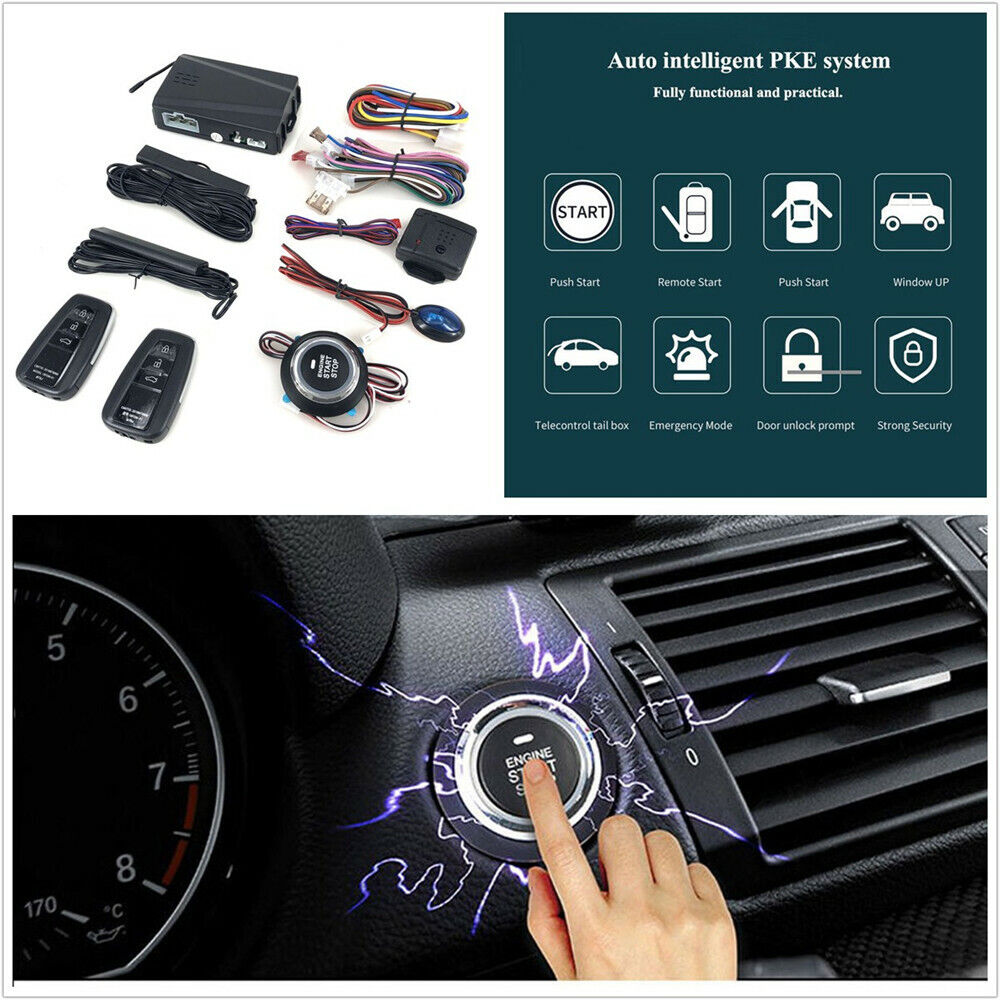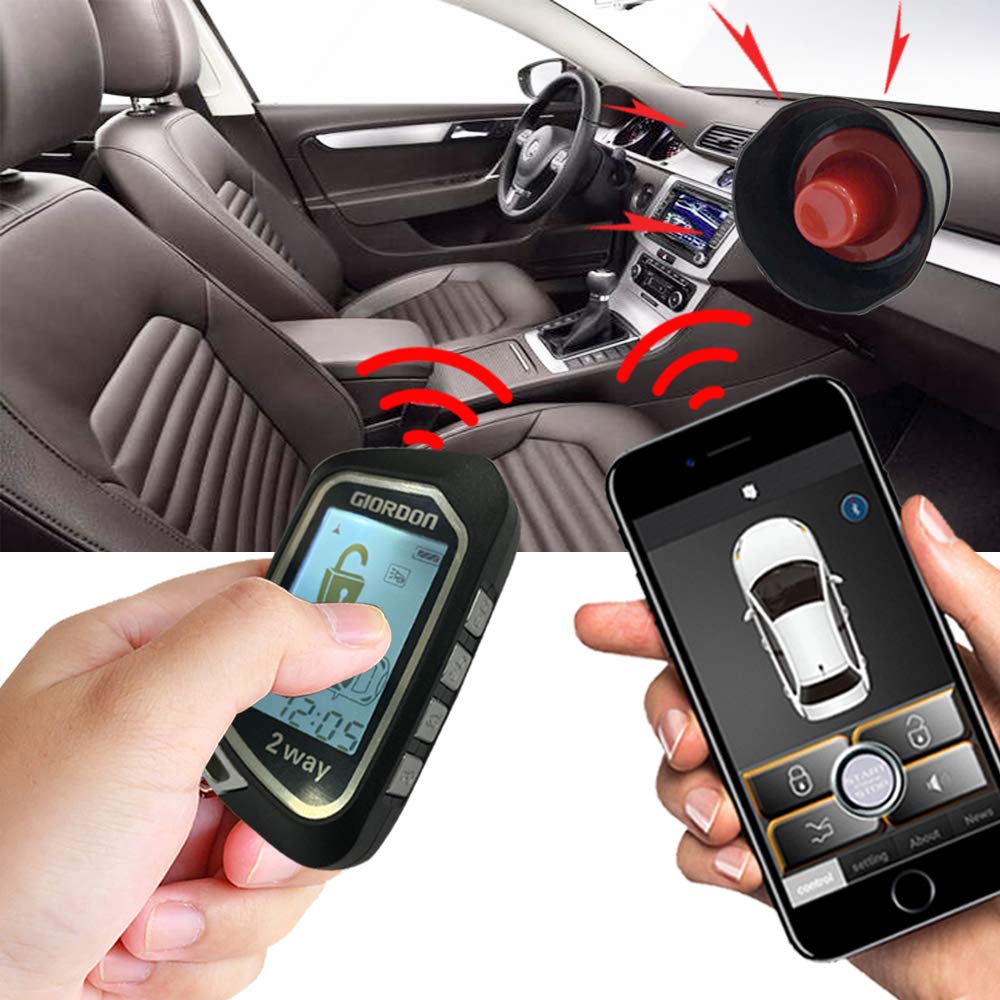If you’re concerned about the safety of your car and want to protect it from theft, then you may have heard of passive disabling devices. These devices are designed to automatically arm themselves when the vehicle is turned off, the ignition key removed, or a door is shut. But what exactly is a passive disabling device, and how can you tell if your car has one installed? Let’s take a closer look.
Passive disabling devices are anti-theft systems that require no additional action on your part to activate. These devices are integrated into the car’s electrical system and are designed to prevent the car from starting or being driven away without the proper key. Examples of passive disabling devices include the PASS Lock system and automatic locking doors when the key fob is moved a predetermined distance from the vehicle.
The PASS Lock system is a common passive disabling device found in many GM vehicles. This system uses a sensor in the ignition switch to determine if the proper key is being used to start the car. If the sensor determines that an unauthorized key is being used, the system will disable the fuel injectors and prevent the car from starting.
Another example of a passive disabling device is automatic locking doors. Many cars today have a feature that automatically locks the doors when the key fob is moved a certin distance away from the vehicle. This feature is designed to prevent unauthorized access to the car, and it can be a valuable tool in deterring thieves.
So, how can you tell if your car has a passive disabling device installed? The easiest way to find out is to consult your owner’s manual. Most car manufacturers will include information about the anti-theft systems installed in their vehicles, and this information should be readily available in the manual.
You can also look for signs of a passive disabling device when you’re inspecting your car. For example, if your car has automatic locking doors, you should be able to see the locks engage when you move away from the vehicle with the key fob. Similarly, if your car has the PASS Lock system, you may notice a light on the dashboard that indicates the system is engaged.
Passive disabling devices are an effective way to protect your car from theft. These devices are designed to automatically arm themselves when the car is turned off, and they require no additional action on your part to activate. If you’re not sure if your car has a passive disabling device installed, consult your owner’s manual or look for signs of the system when you’re inspecting the car. By taking the time to protect your vehicle with a passive disabling device, you can have peace of mind knowing that your car is safe and secure.
Does My Car Have Passive Anti-theft?
Passive anti-theft is a security feature that is built into many modern cars. It is designed to prevent theft by disabling the engine or preventing the car from starting. To determine if your car has a passive anti-theft system, you can consult your car’s owner’s manual or contact the manufacturer.
Some common passive anti-theft systems include immobilizers, which prevent the engine from starting without the correct key or fob, and alarms, which sound an audible warning if someone tries to break into your car.
If your car has a passive anti-theft system, it may be indicated by a small light on your dashboard that shows a car with a lock icon. This light will usually turn on briefly when you turn on the ignition, and then turn off once the key is recognized.
It is important to note that not all cars have passive anti-theft systems, and some may have different types of security features. If you are unsure if your car has a passive anti-theft system, it is alwas best to consult your owner’s manual or contact the manufacturer for more information.

The Use of Passive Disabling Devices in Cars
A passive disabling device on a car is a security system that automatically arms itself when certain conditions are met, such as when the vehicle is turned off, the ignition key is removed, or a door is shut. Unlike active disabling devices, passive devices do not require any action from the user to activate the system. Once armed, the device will prevent the vehicle from beig started or moved without the proper key or code. Examples of passive disabling devices include the PASS Lock system, which is commonly used in General Motors vehicles, and automatic locking doors that engage when the key fob has moved a predetermined distance from the vehicle. These types of systems provide an added layer of security and peace of mind for car owners, helping to deter theft and unauthorized use of the vehicle.
Identifying the Security System in My Car
If you’re unsure what security system your car has, there are a few steps you can take to find out. Firstly, check your car’s user manual or documentation to see if it specifies what security system is installed. If you don’t have the manual, you can usually find it online through the manufacturer’s website or a third-party site.
Next, take a look at your car’s key fob. If it has buttons that lock and unlock the car, it’s likely that the car has a factory-installed security system. Additionally, check to see if your key fob has a panic button, whih is a common feature of many factory-installed security systems.
If your car doesn’t have a factory-installed security system, it’s possible that an aftermarket system has been installed. To check for this, open the hood of your car and look around for a siren or other security system components. Aftermarket security systems are often installed in the engine compartment, so this is a good place to start.
If you’re still unsure what security system your car has, you can take it to a dealership or a qualified mechanic who can help identify the system and provide any necessary maintenance or repairs. It’s important to know what security system your car has so that you can properly maintain and use it to protect your vehicle from theft or damage.
Understanding Vehicle Active Disabling Devices
A vehicle active disabling device is a safety system that is designed to prevent a car’s fuel, ignition, or starter from operating. It is an anti-theft device that requires the driver to take action to protect the car. This device is typically controlled by a button on the car key, whih the driver must press to activate the system. Once activated, it cuts off the fuel flow, ignition or starter, making it impossible to start the car, and rendering it useless to any unauthorized person trying to steal it. The active disabling device is an effective way to protect your car from theft and ensure the safety of your vehicle.
The Use of Engine Immobilizers as Passive Disabling Devices
An engine immobilizer is a passive disabling device. This means that it doesn’t require any action from the driver or any external intervention to activate it. Once the device is installed and activated, it works automatically to prevent unauthorized access to the vehicle. The immobilizer achieves this by cutting off the current to the starter motor, ignition switch, and fuel pump. This makes it impossible for a thief to start the engine or drive the car away. The passive nature of the immobilizer makes it a very effective anti-theft device, and some insurance companies may even offer discounts on policies if the device is installed by a reputable shop. an engine immobilizer is a reliable and convenient way to secure your vehicle aginst theft.

Source: economictimes.indiatimes.com
Understanding the Difference Between Active and Passive Car Alarms
To determine whether your car alarm is active or passive, you need to consider how it is armed. If you must press a button or use a remote to activate the alarm, it is an active alarm. On the other hand, if the alarm turns on automatically once the key is removed from the ignition and all the doors are closed, it is a passive alarm. In summary, if you don’t have to do anything to arm the alarm, it’s likely passive.
Does My Car Have LoJack?
LoJack is a stolen vehicle recovery system that is installed in some cars. To find out if your car has LoJack, you can start by checking your owner’s manual or service records to see if it was installed by the manufacturer or a previous owner. Additionally, you can look for a small rectangular box, usually black or silver, somewhere in your car. This box is typically installed in a hidden location, such as under the dashboard or seat. However, if you’re unable to locate the device, another way to possibly find out if your car has LoJack is to use your vehicle identification number (VIN). You can call LoJack at 1-877-563-0032 and ask, alhough keep in mind that they’re not obligated to give you any information due to safety concerns.
Can Passive Mode Destroy Your Car?
Your car can get destroyed in passive mode. Passive mode only makes your character invulnerable to damage from other players and their vehicles. However, if another player or NPC attacks your vehicle, it can still be damaged and destroyed. Additionally, if you crash your car or drive it into water or fire, it can also be destroyed. Therefore, it is important to be cautious and avoid potentially dangerous situations even when in passive mode to keep your vehicle from being destroyed.
How Do I Know If My Car Has Been Fitted With A Security Device?
There are a few ways to determine whether your car has been fitted with a security device. Firstly, you can consult your vehicle’s handbook, which sould outline any security features that were factory-installed. If you don’t have access to the handbook, you can also check the car itself for any visible signs of a security device. For example, some cars have a flashing LED light on the dashboard that indicates the presence of an immobiliser or alarm system. Additionally, you can take your car to a mechanic or auto electrician, who will be able to inspect the vehicle and identify any security devices that have been fitted, even if they are not immediately visible. it’s always a good idea to ensure your car is properly secured, whether that means investing in an aftermarket security system or simply taking basic precautions like locking the doors and parking in a secure location.

Does My Car Have an EDR?
To determine if your car has an EDR, the first thing you should do is check the owner’s manual. The EDR is a small device that looks like an iPod and is typically found under the front row seats, either under the driver’s seat or the central console between the front row seats. It’s important to note that not all cars have an EDR, so it’s essential to check your owner’s manual to see if your vehicle is equipped with one. If you’re unsure or can’t find the infrmation in the manual, you can contact your car’s manufacturer or a trusted mechanic for assistance.
The Purpose of the Vehicle Security Code in a VIN Number
The vehicle security code, also known as the 9th digit in the VIN number, serves as a security measure to detect invalid or fraudulent VINs. This code helps to prevent car theft and fraud by verifying the authenticity of the vehicle’s identification number. It is used by law enforcement agencies, insurance companies, and oher entities that need to verify the identity of a vehicle. If the 9th digit does not match the standards set by the National Highway Traffic Safety Administration (NHTSA), it could indicate a fraudulent VIN and the vehicle may be flagged as suspicious. Therefore, the vehicle security code in the VIN number plays a crucial role in protecting consumers and ensuring the accuracy of vehicle identification.
Disabling a Car Through Car Companies
Car companies use a technology called a “starter interrupter” to disable a car remotely. This technology is often used by car dealerships to track the location of a car using GPS and disable the car from starting if it is not moving. The system works by installing a small device in the car’s electrical system, which is connected to a remote server. The server can then send a signal to the device to disable the car’s starter, preventing the engine from starting. This technology can be used in situations were a car owner has missed payments or defaulted on a loan, allowing the dealer to remotely disable the car until the issue is resolved. The starter interrupter technology is just one example of the many ways car companies are using technology to improve the safety and security of their vehicles.
How Do I Remove A GPS Disabler From My Car?
To remove a GPS disabler from your car, you will need to follow a few steps. First, locate the GPS disabler device in your vehicle. It’s usualy hidden in inconspicuous places, such as under the dashboard, behind the glove box, or near the center console. Once you have located the device, you will need to disconnect the antennas at the receiver and pull the GPS antenna. This will disable the GPS signal and prevent the device from working.
After disabling the GPS signal, you can proceed to remove the device from your car. You will need to disconnect all the ignition wires and remove any components that are attached to the GPS disabler device. Make sure to keep track of all the wires and components that you remove, so you can easily put them back in their original place later.
Once you have removed the GPS disabler device, you can begin to put your car back together. Reconnect all the ignition wires and put back the components in their original place. Make sure everything is securely in place and functioning correctly before driving your car again.
It’s important to note that removing a GPS disabler device from your car may not be legal in all areas. It’s best to consult with a legal professional before attempting to remove a GPS disabler device from your vehicle.

Difference Between Passive and Active Disabling
Passive and active disabling devices are two types of anti-theft mechanisms that can be installed in vehicles. The main difference between these two types of devices is the way they disable the vehicle’s fuel, ignition or starting system.
A passive disabling device works by interrupting the electrical signal that allows the vehicle to start or run. For example, a common type of passive device is an immobilizer that is installed in the vehicle’s key. This immobilizer prevents the vehicle from starting unles the correct key is inserted into the ignition. This type of device is passive because it does not actively prevent the vehicle from being started or driven, but rather it prevents the vehicle from starting if the correct key is not present.
On the other hand, an active disabling device actively prevents the vehicle from being started or driven by using a separate control unit that can disable the fuel, ignition or starting system on command. For example, a remote control device can be used to send a signal to the active disabling device to turn off the fuel pump or ignition system, thereby preventing the vehicle from starting or running.
While passive disabling devices rely on interrupting the electrical signal to prevent the vehicle from starting or running, active disabling devices require a separate control unit to actively disable the fuel, ignition or starting system on command.
Conclusion
Passive disabling devices are a popular anti-theft system in modern vehicles, and they work by automatically arming themselves when the vehicle is turned off or the key is removed. These systems require no additional action, making them convenient for car owners. Examples of passive disabling devices include the PASS Lock system and automatic locking doors. These systems are easy to identify, as they do not require any additional hardware or buttons. Passive disabling devices provide a simple and effective way to protect your vehicle from theft without requiring any extra effort on your part.
